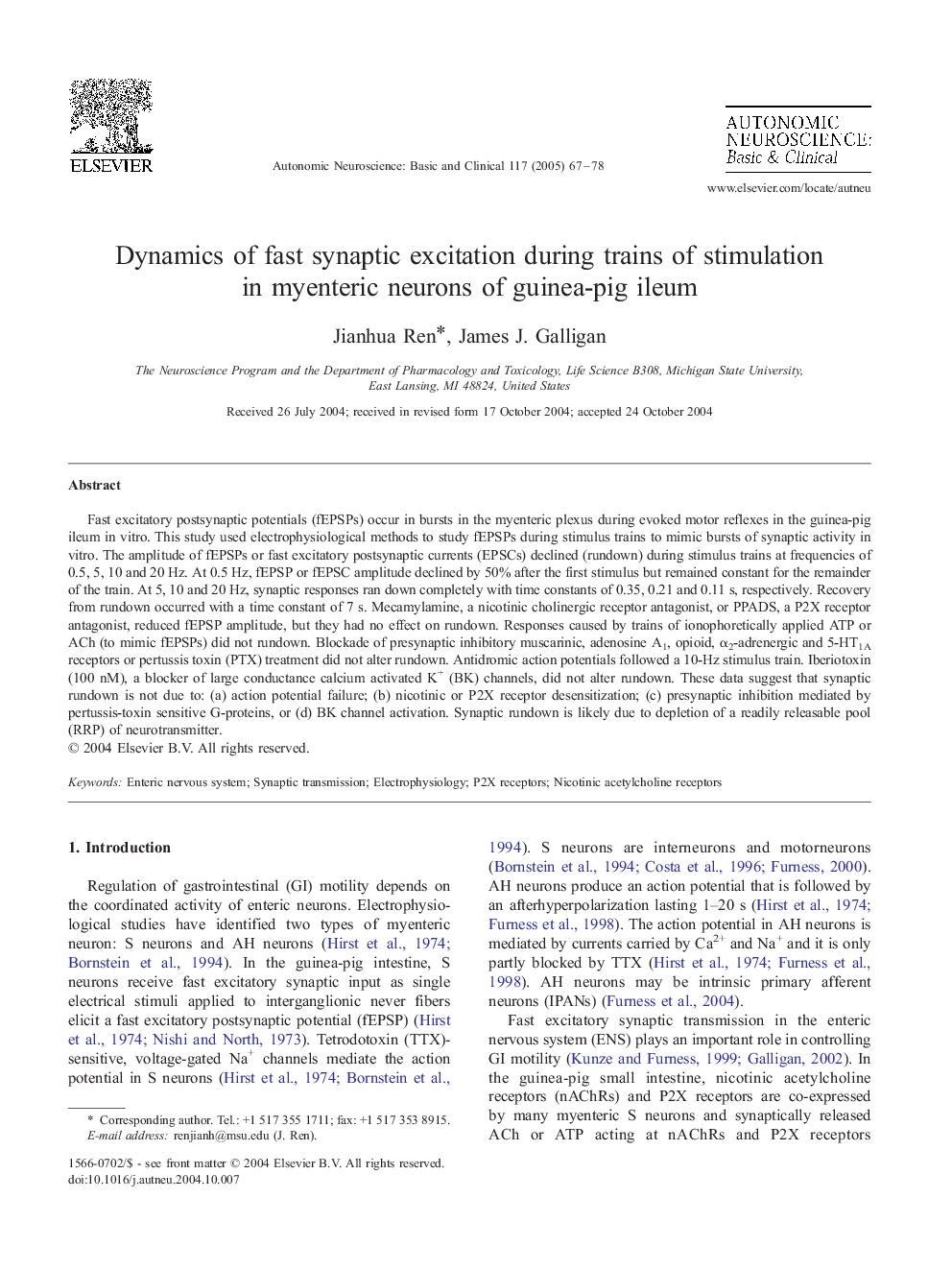| Article ID | Journal | Published Year | Pages | File Type |
|---|---|---|---|---|
| 9186549 | Autonomic Neuroscience | 2005 | 12 Pages |
Abstract
Fast excitatory postsynaptic potentials (fEPSPs) occur in bursts in the myenteric plexus during evoked motor reflexes in the guinea-pig ileum in vitro. This study used electrophysiological methods to study fEPSPs during stimulus trains to mimic bursts of synaptic activity in vitro. The amplitude of fEPSPs or fast excitatory postsynaptic currents (EPSCs) declined (rundown) during stimulus trains at frequencies of 0.5, 5, 10 and 20 Hz. At 0.5 Hz, fEPSP or fEPSC amplitude declined by 50% after the first stimulus but remained constant for the remainder of the train. At 5, 10 and 20 Hz, synaptic responses ran down completely with time constants of 0.35, 0.21 and 0.11 s, respectively. Recovery from rundown occurred with a time constant of 7 s. Mecamylamine, a nicotinic cholinergic receptor antagonist, or PPADS, a P2X receptor antagonist, reduced fEPSP amplitude, but they had no effect on rundown. Responses caused by trains of ionophoretically applied ATP or ACh (to mimic fEPSPs) did not rundown. Blockade of presynaptic inhibitory muscarinic, adenosine A1, opioid, α2-adrenergic and 5-HT1A receptors or pertussis toxin (PTX) treatment did not alter rundown. Antidromic action potentials followed a 10-Hz stimulus train. Iberiotoxin (100 nM), a blocker of large conductance calcium activated K+ (BK) channels, did not alter rundown. These data suggest that synaptic rundown is not due to: (a) action potential failure; (b) nicotinic or P2X receptor desensitization; (c) presynaptic inhibition mediated by pertussis-toxin sensitive G-proteins, or (d) BK channel activation. Synaptic rundown is likely due to depletion of a readily releasable pool (RRP) of neurotransmitter.
Keywords
Related Topics
Life Sciences
Neuroscience
Cellular and Molecular Neuroscience
Authors
Jianhua Ren, James J. Galligan,
